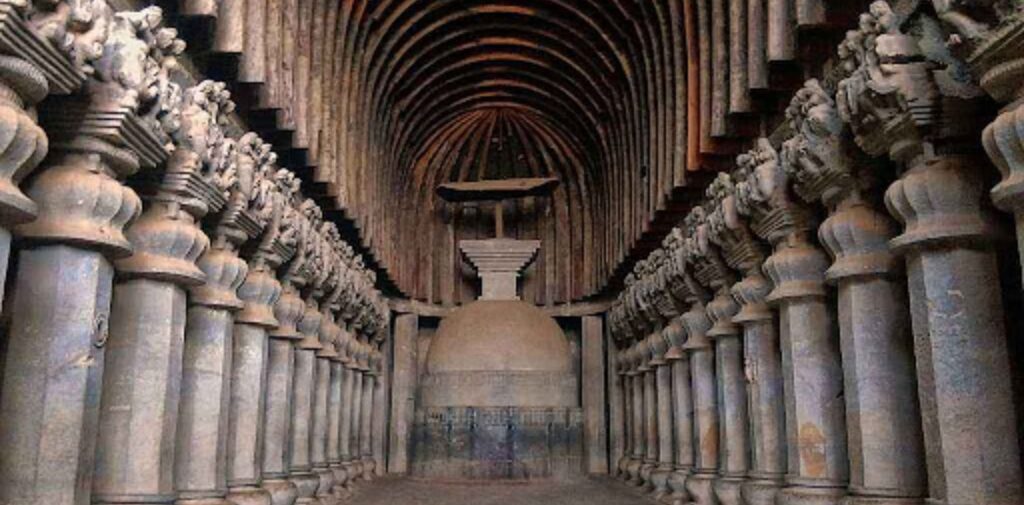The Satavahana Dynasty is one of the most significant but often overlooked periods in ancient Indian history. Spanning several centuries, the Satavahanas played a crucial role in bridging the gap between the great Mauryan Empire and the Gupta Empire. Though they are often overshadowed by the more famous Mauryas and Guptas, the Satavahanas helped shape the political, cultural, and economic landscape of India during the early centuries of the Common Era. Their rule marked a time of transition and continuity that set the stage for the cultural and political achievements of the Gupta Empire.
In this article, we will explore the importance of the Satavahana Dynasty in the context of Indian history, focusing on how their contributions helped transition India from the Mauryan period to the rise of the Gupta Empire.
The Rise of the Satavahana Dynasty
The Satavahana Dynasty rose to prominence in the Deccan region after the decline of the Mauryan Empire in the 2nd century BCE. The Mauryan Empire, once the largest and most powerful empire in India, had collapsed by the time Ashoka’s successors came to the throne. As a result, India was fragmented into smaller kingdoms, with regional powers emerging across the subcontinent. The Satavahanas were one such power that played a significant role in maintaining stability in the Deccan.
The founder of the Satavahana Dynasty is believed to be Simuka, who established the dynasty around 230 BCE. The Satavahanas initially ruled over the region known today as Maharashtra, Andhra Pradesh, and parts of Madhya Pradesh and Karnataka. Their kingdom grew over time, and they became an important political and cultural force in southern and central India.

Political Role: Continuity and Transition from the Mauryas
The Satavahanas helped preserve many of the political systems established by the Mauryan Empire. One of the most significant ways they did this was by continuing the centralized administration that the Mauryas had established. The Satavahanas inherited and adapted many of the policies of the Mauryas, including a system of taxation, a well-organized bureaucracy, and the use of military power to maintain control over their territory.
Although the Satavahanas were not as powerful as the Mauryas, they filled the power vacuum left by the collapse of the Mauryan Empire. They also helped maintain regional stability in the Deccan, which allowed for the development of trade, culture, and the growth of new political institutions. The Satavahana kings made sure that their rule was based on the principles of dharma (righteousness) and justice, which were central to Mauryan governance.
In addition to continuing Mauryan administrative practices, the Satavahanas were also influenced by the Mauryan military structure. They maintained standing armies and were involved in frequent military campaigns to protect their territories and expand their influence. However, unlike the Mauryas, the Satavahanas were more focused on regional and local control, often negotiating with smaller kingdoms to secure alliances rather than conquering vast new territories.
Economic Contributions: Trade and Cultural Flourishing
One of the most important aspects of the Satavahana rule was their role in fostering economic growth, particularly in the fields of trade and agriculture. Their territory lay at the crossroads of important trade routes that connected the northern and southern parts of India. This position allowed the Satavahanas to become major players in both internal and international trade.
Under Satavahana rule, the Deccan became a center for trade between India, the Mediterranean world, and Southeast Asia. The Satavahanas facilitated trade with the Roman Empire, with which they exchanged goods such as spices, textiles, and gemstones. Evidence of this trade can be seen in the ports along the western coast of India, such as the famous port city of Bharuch (Broach) in Gujarat.
The Satavahanas also encouraged agriculture, particularly the cultivation of rice, which was the staple food of their empire. They introduced several land reforms that improved irrigation and land management, which boosted agricultural productivity. This in turn supported the growing population and economy of the Satavahana Kingdom.
Culturally, the Satavahanas were patrons of art, literature, and religion. They supported the construction of Buddhist stupas and monasteries, such as the ones found in Amaravati and Nagarjunakonda. These architectural achievements were not only important for religious reasons but also as symbols of the Satavahanas’ cultural influence. The Satavahanas themselves are often depicted in art as having a strong connection to Buddhism, though they were also known for their religious tolerance, supporting other faiths such as Jainism and Hinduism.

Cultural Synthesis: The Influence on Art, Religion, and Language
The Satavahana Dynasty was instrumental in fostering cultural synthesis between different regions and religious traditions. Their kingdom acted as a melting pot where Buddhism, Jainism, and Hinduism coexisted and flourished. The Satavahanas themselves were great patrons of Buddhism and played a key role in the construction of numerous Buddhist stupas and shrines.
The most notable of these Buddhist monuments is the Amaravati Stupa, which became an important center of Buddhist learning and culture. This stupa is known for its intricately carved sculptures depicting scenes from the life of the Buddha. These sculptures reflect the syncretic nature of the Satavahana period, with influences from both Indian and Greco-Roman art.
In addition to Buddhist art and architecture, the Satavahanas promoted the development of Sanskrit literature. The Satavahana period saw the emergence of significant Sanskrit texts, and the use of Sanskrit as a language of administration and culture grew during this time. This would later influence the Gupta Empire, which would embrace Sanskrit as the language of its court and literature.
The Satavahanas also played a role in promoting the spread of religious ideas beyond their own empire. They helped propagate the influence of Buddhism throughout southern India, and their support for trade with Southeast Asia contributed to the spread of Indian culture and religion to these regions.

Transition to the Gupta Empire: Setting the Stage for the Golden Age
While the Satavahana Dynasty itself declined by the 3rd century CE, it played a key role in the transition from the Mauryan period to the Gupta period. The Satavahanas helped bridge the gap between these two great empires in several important ways.
First, the Satavahanas preserved many of the political and administrative systems established by the Mauryas, which would later be refined and expanded by the Guptas. The Gupta Empire, which emerged around the 4th century CE, inherited a strong administrative structure from the Satavahanas, and the model of governance set by the Satavahanas helped shape the administration of the Guptas.
Second, the Satavahanas contributed to the cultural environment that would later flourish under the Guptas. The Satavahanas helped establish Sanskrit as the language of culture and administration, which became a central feature of Gupta society. The Gupta Empire is often referred to as the “Golden Age” of India, and the cultural, intellectual, and artistic developments that took place during this period were built upon the foundations laid by the Satavahanas.
Finally, the Satavahanas helped maintain stability in southern and central India during a time when northern India was experiencing political fragmentation after the fall of the Mauryan Empire. The stable and prosperous environment they created allowed for the rise of other kingdoms, including the Guptas, who would later emerge as the dominant power in northern India.
Conclusion
The Satavahana Dynasty played a pivotal role in bridging the gap between the Mauryan and Gupta Empires. By continuing the political, economic, and cultural traditions of the Mauryas, while also fostering new developments in art, trade, and religion, the Satavahanas set the stage for the rise of the Gupta Empire and the Golden Age of India. Their contributions to governance, religion, culture, and trade helped maintain the stability and prosperity of ancient India during a time of transition, and their legacy continued to shape Indian history long after their rule had ended.




